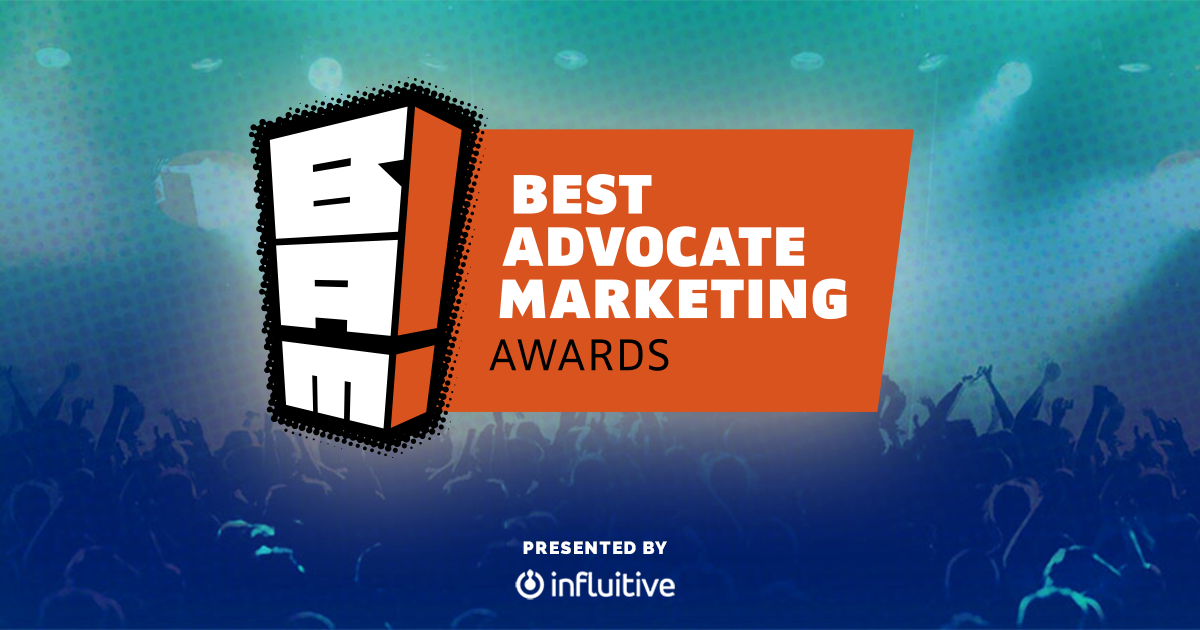Advocamp 2017 Should Be A Wake-Up Call for Advocate Marketers
I’ve been doing customer advocacy since, well, let’s just say long before advocate marketing was a “thing”. I just called it marketing, the most effective form of marketing. How do I know that? Because in those 25+ years, everything I did with customer voice was directly tied to…and measured by…its contribution to growth of the company.
We put on user conferences to drive greater customer success so those customers would make referrals and so we could advance the prospects in attendance. I wrote case studies that were judged strictly on how well they accelerated deals by knocking down the fears and doubts of buyers. The customer reference calls I arranged caused the buyer to check the last remaining box to say “Yes” to the deal.
Now advocate marketing is a “thing”. Influitive has done a fantastic job making it an exciting career path, and giving those folks technology and practices to scale their advocate outreach. When I was an early user of the platform at Forrester 5 years ago, I focused on three use cases that I knew would have the most impact on driving revenue growth: getting customers to use more of the products they bought so we’d improve renewals, gathering feedback on our products to improve differentiation, and getting customer stories about the initiatives they were doing better with our help so we could knock down the biggest barriers to sales.
So it seemed perfectly reasonable that I went to Advocamp last week eager to hear about how today’s advocate marketers are moving the revenue needle. One of the biggest surprises for me was just how early we still are in connecting advocate marketing to real business impact.
I would expect that the practitioners who were chosen to speak would be running the most advanced programs. That the winners of the Best Advocate Marketing Awards (BAMMIEs) would have the best results. Maybe both of those statements are true, but my fear is that if advocate marketers don’t adjust their mental models and shift more focus to impacting revenue growth, that at best the opportunity to make customer and advocate marketing the most important function in the company like it deserves will be wasted, and at worst we’ll see funding for these programs disappear and people lose their jobs.

Here are a couple observations from the event that cause this concern:
Measuring Activity Rather Than Impact
When advocate marketers talked about the results of their work, they clung to metrics tied to program activities rather than business impact. The most cited success claims were based on factors like number of new advocates joined this year, number of engaged advocates, number of challenges completed, number of product reviews posted, number of testimonial quotes received, number of case studies written.
The most frequent metric related to revenue impact I heard were a couple of claims that engaged advocates were X% more likely to renew than non-advocates…well, yeah, but did their advocacy cause them to renew, or did their likelihood to renew cause them to be advocates? The funniest and scariest expression of impact came from a practitioner who mentioned that many of the referrals they get from advocates are for people who are dead.
Advocate marketers need to sharpen their focus on creating experiences and customer voice content that can be measured by factors such as revenue influenced, sales cycles accelerated, expansion opportunities created, and retention rate improvements. Carlos Gonzales from Ceridian described that his references impacted almost $200M in revenue and that advocates telling their stories within their sphere of influence brings in prospects with a vision of a solution that only Ceridian can satisfy.
In addition to revenue-generating impact, advocate marketers should do more to inject customer voice into the company’s strategic decisions. Carbon Black’s Kate Cohen did a nice job showcasing how she gathers customer voice from her advocates to inform partner integration priorities, product and brand messaging, and product usability improvements.
Sales Is Absent Upfront
Speaking of sales, there was a profound lack of sales channel involvement in the goal-setting and design of advocacy programs. The main mentions of interaction with sales centered around fulfilling the never-ending, and highly specific requests from sales for customer references. Since there was so little mention of sales by the conference speakers, I asked attendees questions like: “How do you make sure customer voice speaks to the needs of your buyers? How do you have your advocates help sales with the biggest objections they encounter?” The responses were various forms of “We’re not there yet.”
One attendee told me that the sales reps have worn away the carpet leading up to his workspace because they come by so often looking for customer proof. Don’t wait for sales to come to you, find out from your reps what the biggest questions, fears, and doubts are that keep your prospects from buying and customers from renewing. Then make sure your customer voice content addresses these explicitly. Think beyond the classic case study and create assets in which customers share insights that knock down the big objections, create urgency, or show why they migrated from a competitor.
“But my sales reps won’t tell us that information or give us access to their customers,” is a line I wish I had a dollar for every time I’ve heard it. No worries. Someone in your marketing department has likely done buyer persona research, so get your hands on those personas because done correctly, they are ripe full of insights on your buyer needs and barriers. Create those assets, put them into the hands of your sales reps, and they’ll beg you for more, and will be willing to give you access to their accounts. And you’ll have plenty of time to create them if you stop doing those useless “problem, solution, result” case studies that no one reads.
References Are Burned Out
Speaking of requests from sales for customer references, one of the biggest pains that came up over and over again at Advocamp was customer reference burnout. “Since we have such a shortage of customer references, we overuse the handful who have agreed, sometimes asking them to do 4 or 5 calls a month.” To attack this pain, advocate marketers scramble to get more customers to agree to be references, which is a treadmill you can’t stay on for long.
Instead, you need to reduce the need for live references at the end of the sales cycle. The best way to do this is to find out the most frequent questions that prospects ask on reference calls. Then capture customer stories that address those questions, and introduce them earlier in the buying cycle, so you earn trust and build brand preference early. Companies like Microsoft and Cisco create virtual recorded references, and restrict their use to qualified prospects, which allows the customer contributing the stories to be more open about their initiatives.
Think it is hard to find out what those recorded reference questions ought to be? I’ll get you started. Based on over 400 buyer persona research interviews I’ve done with executives, the #1 question buyers want to find out from customers is “What pitfalls have you hit along the way and how did you get through them?” The #2 is “What would you do differently if you were to start over.” See the pattern? They’re not looking for the “happy day scenarios” you put in your case studies, they want to know what went wrong. Address that and your authenticity earns trust.
Authenticity Is In Words Only
Speaking of authenticity, this was a key theme of Geoffrey Moore’s keynote. What buyers want: A story told in the first person, by someone who is clearly being authentic. And how do people know if your customer voice is authentic? Tone matters. They tell by tone of voice. They listen to how sentences fit together. People have crap detectors, and after 6 or 7 sentences, they have a sense.
This is another reason to do away with the classic case studies, written in the third person, in long form text, published in 4 page PDFs, full of your company’s value prop, not the customers’ voice. Instead, gather short audio and video snippets of customers, sharing their stories, full of emotion, in their own voice, addressing the biggest questions, fears and doubts of buyers.
Geoffrey Moore also talked about capturing customer voice in ways that let customers build their social capital. That is their motivation to share their voice. Yet most advocate marketers pay their advocates up to $200 or more to write a review on G2Crowd. I heard payments as high as $750 for advocates to take reference calls. This isn’t authentic. As I said in a prior post, this is Paid Advocacy, not Earned Advocacy.
The best way to shift from Paid to Earned Advocacy is to stop asking your advocate to give you testimonials, endorsements and recommendations. Instead allow them the privilege of sharing their knowledge, experience and advice. Why? People want to sound smart. They want to feel successful. And they want to be heard. Making this shift in my Customer Voice program at Forrester was a game-changer and customers were grateful for the opportunity to share their stories.
